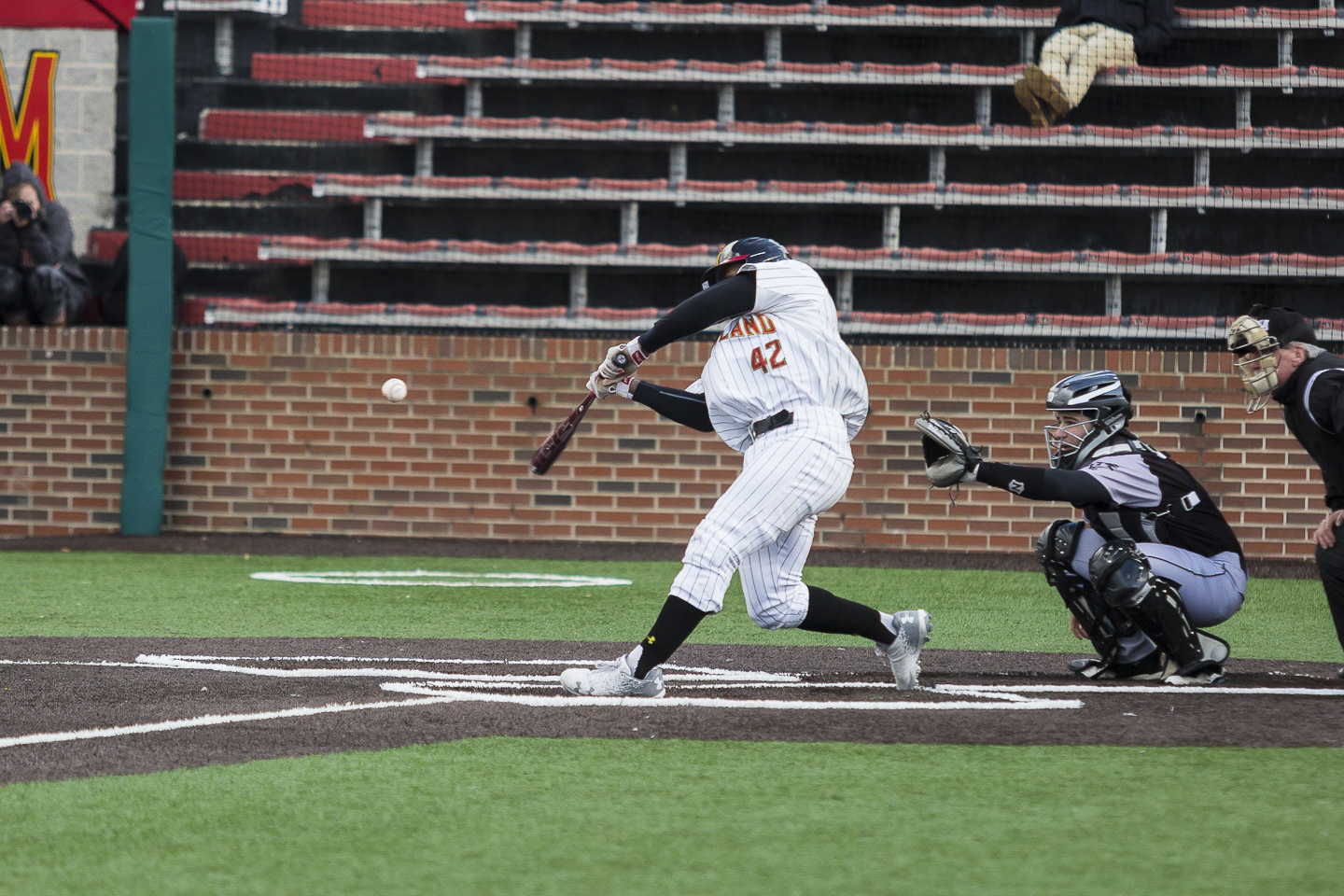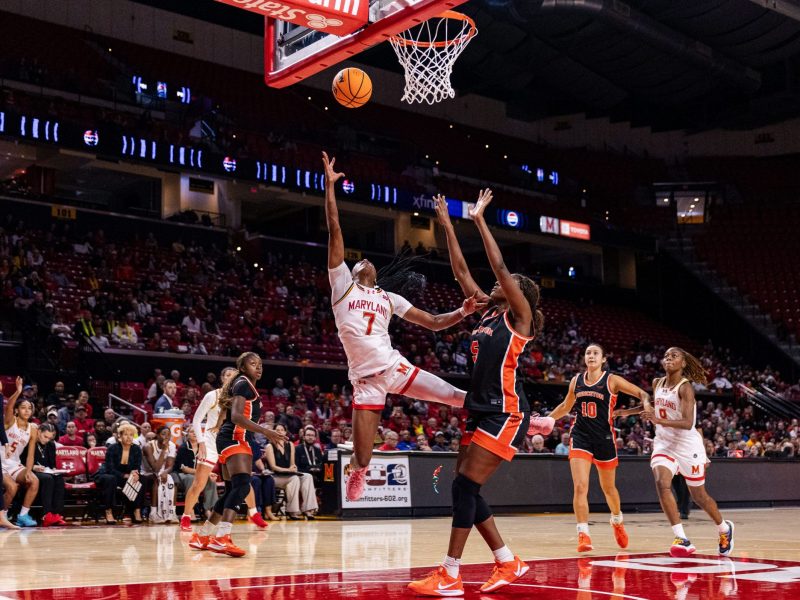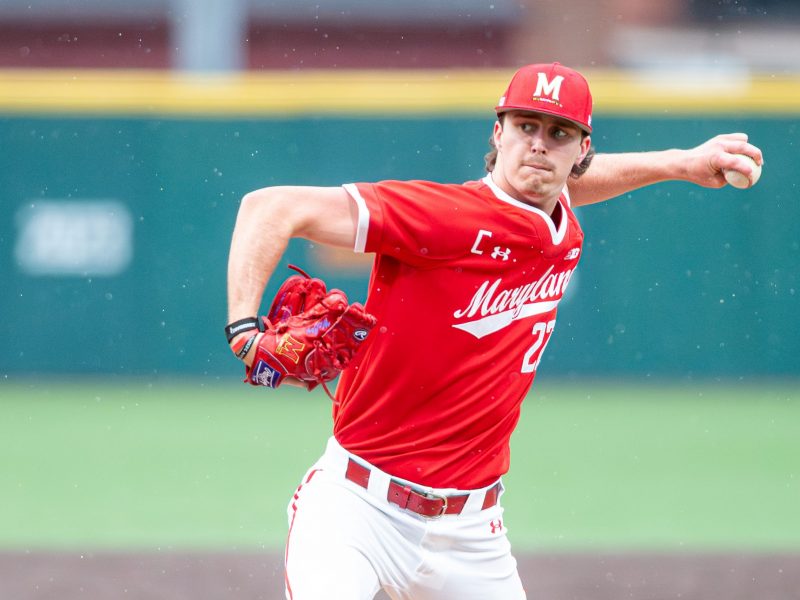Maryland baseball coach John Szefc has a picture of his three kids standing in front of a building behind left field at Hawks Field in Lincoln, Nebraska, from when he was an associate coach at Kansas. In his career facing the Cornhuskers, he had never seen a ball hit beyond the pavilion.
But that changed Sunday, when right fielder Marty Costes hit a two-run home run in the sixth inning of Maryland’s 8-4 loss to Nebraska that cleared the low outfield wall and the fence behind the building where the picture was taken.
“I’ve never seen a ball hit farther [in this ballpark],” Szefc said. “It got us one run closer.”
Though Costes has said several times this season he doesn’t approach at-bats hoping to hit home runs, it was the kind of long ball the Terps have become accustomed to seeing. He leads the team with seven home runs this season.
Costes’ power Sunday got the Terps back in the game against left-hander Jake Meyers, who allowed three runs through about 7 innings. Maryland entered the sixth trailing by three, but a leadoff double from center fielder Zach Jancarski offered hope of a rally. With one out and Jancarski still on second, Costes wanted to hit a pitch to right field as he had in his previous at-bat.
Instead, he crushed a high fastball far beyond the left field wall. Meyers watched the ball make a quick exit and stared at the ground as Costes rounded the bases.
“I realized halfway down the line I didn’t feel anything at all,” Costes said. “That’s the best feeling in baseball, when you don’t feel anything on contact. I was just grateful we were able to make a comeback. That was a big point in the game.”
Before Costes hit the home run, Jancarski felt Meyers might make a mistake. As Jancarski took his lead off second base between pitches, Meyers kept looking back at him. Jancarski continued to creep off the bag, figuring he would distract the sophomore left-hander.
The strategy worked, as Costes made strong contact with the first pitch he saw. Jancarski took one aggressive stride toward third base before briefly stopping to see where the ball ended up.
“I was like, ‘Marty’s going to get a pitch to hit here,'” Jancarski said. “And he hit it and I took one hard step and stopped and watched it because I wanted to watch it as much as everyone else in the crowd. I turned and watched it sail into outer space, and then I jogged home.”
Costes initially thought his home run to center field last weekend against Rutgers in Piscataway, New Jersey, went a greater distance. But after more consideration, he said the shot against Nebraska was the farthest he’s hit a ball with someone paying attention.
“Maybe in batting practice on a random day with the wind blowing out,” Costes said of the last time he hit a ball as far as he did Sunday. “This definitely takes the cake.”
After being ejected for an argument with home plate umpire Mike Schultz about the strike zone in the bottom of the fifth, Szefc watched Costes’ home run on TV. But he knew exactly how far the ball had landed using his family picture for reference. Though Maryland’s comeback bid fell short, the fifth-year coach was impressed.
“I felt like it was a matter of time before Marty did that this weekend,” Szefc said. “I think he’s one of the best hitters around right now.”



